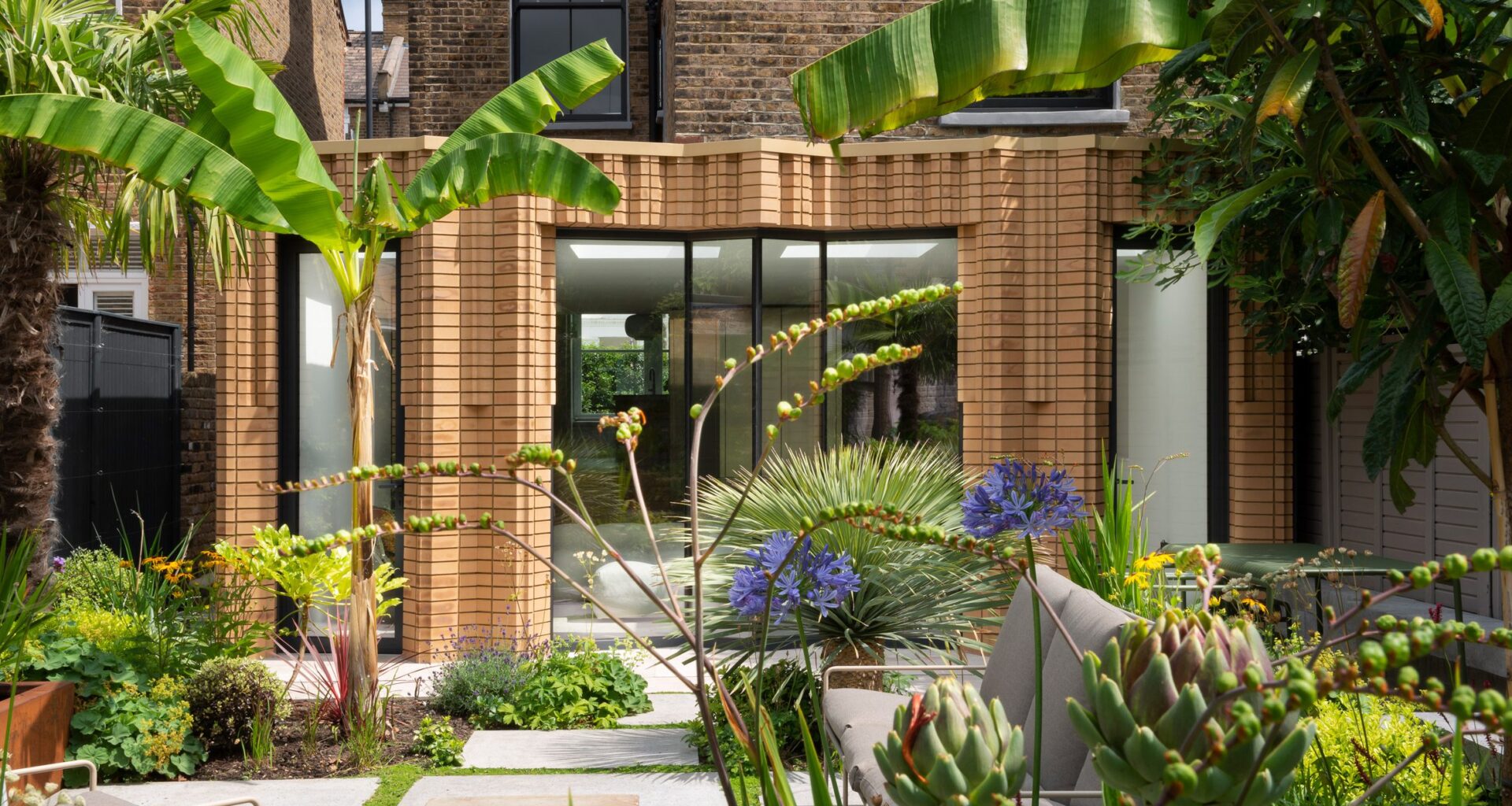Architecture studio Bureau de Change has revamped a Victorian house in Fulham, London, adding an extension with angular brick cladding that has “a sense of movement”.
Named W House, the three-storey semi-detached residence has been reconfigured internally and extended at the rear for a couple and their two children.
Bureau de Change clad the extension in pale yellow bricks arranged in a geometric pattern that draws on Victorian architecture, ensuring the design feels in keeping with its surrounding context.
 Bureau de Change has renovated a Victorian house in London
Bureau de Change has renovated a Victorian house in London
“We were keen that the extension had a story to say, so we played with how we laid the bricks by rotating and mirroring them to create a sense of movement and texture from every angle,” Bureau de Change told Dezeen.
“The rear volume is inspired by a series of Victorian prefabricated moulding details found in historical joinery catalogues and pattern books of a local craftsman,” said the studio.
“The striking three-dimensional mouldings with their intricate plays of light and shadow are reinterpreted at various scales.”
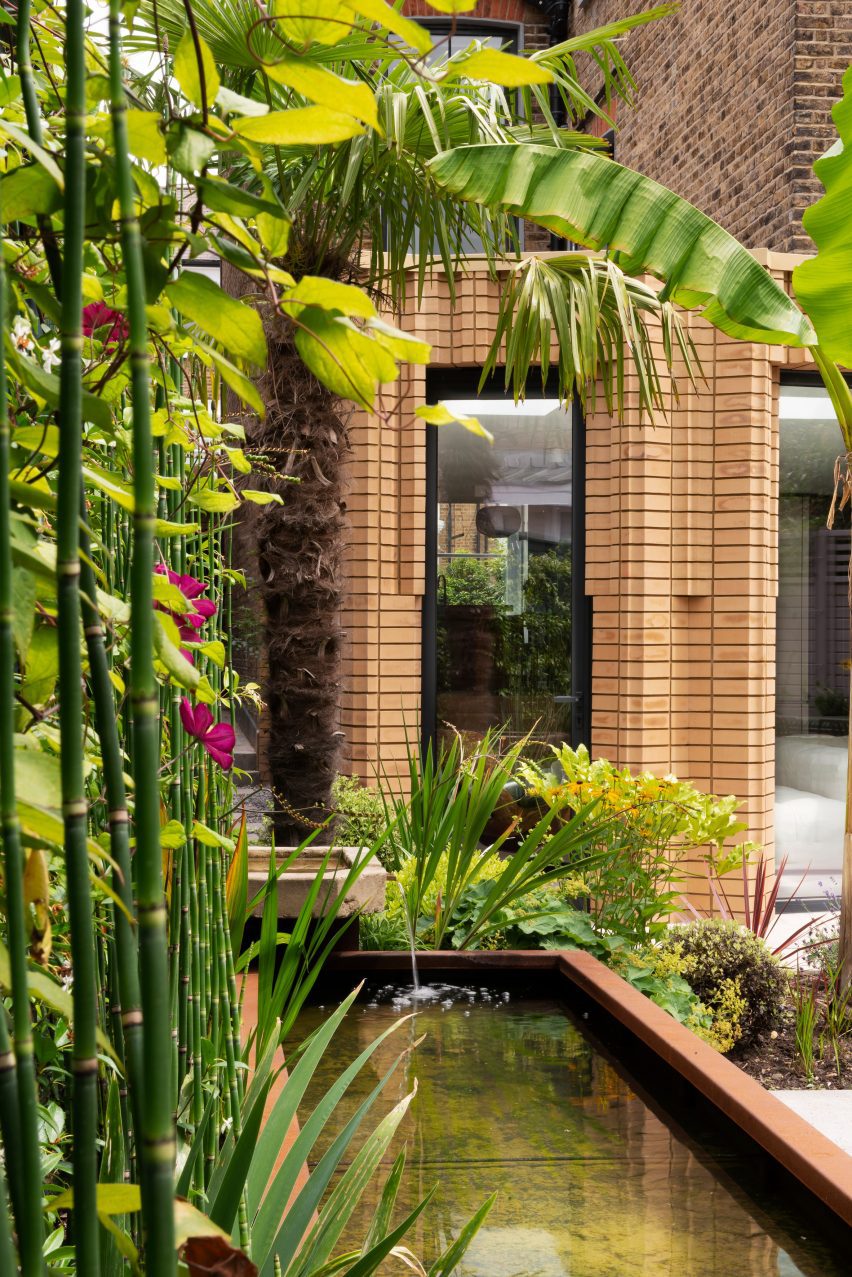 It added a brick-clad extension
It added a brick-clad extension
Housed in the rear extension is a living space illuminated by skylights and angular folded glazing, with views out over the garden on both sides.
“The site is southwest facing, with the rear receiving plenty of direct sunlight, so we carefully designed the mass to avoid large expanses of glazing, instead opting for punctuated openings,” said the studio.
 The extension houses a light-filled living space
The extension houses a light-filled living space
A brushed stainless steel volume that echoes the form of the extension conceals storage space and a downstairs toilet.
“The central faceted stainless steel volume provides a focal element and solid core to the ground floor, complementing the new faceted extension,” the studio said.
 Folded glazing provides views of the garden on both sides
Folded glazing provides views of the garden on both sides
Alongside the metal volume, wooden steps lead up to a dining room at the centre of the house, where the studio uncovered and restored timber floorboards and revived original ceiling mouldings with white paint.
This was part of the studio’s overarching plan to preserve the home’s original character while adding contemporary elements.
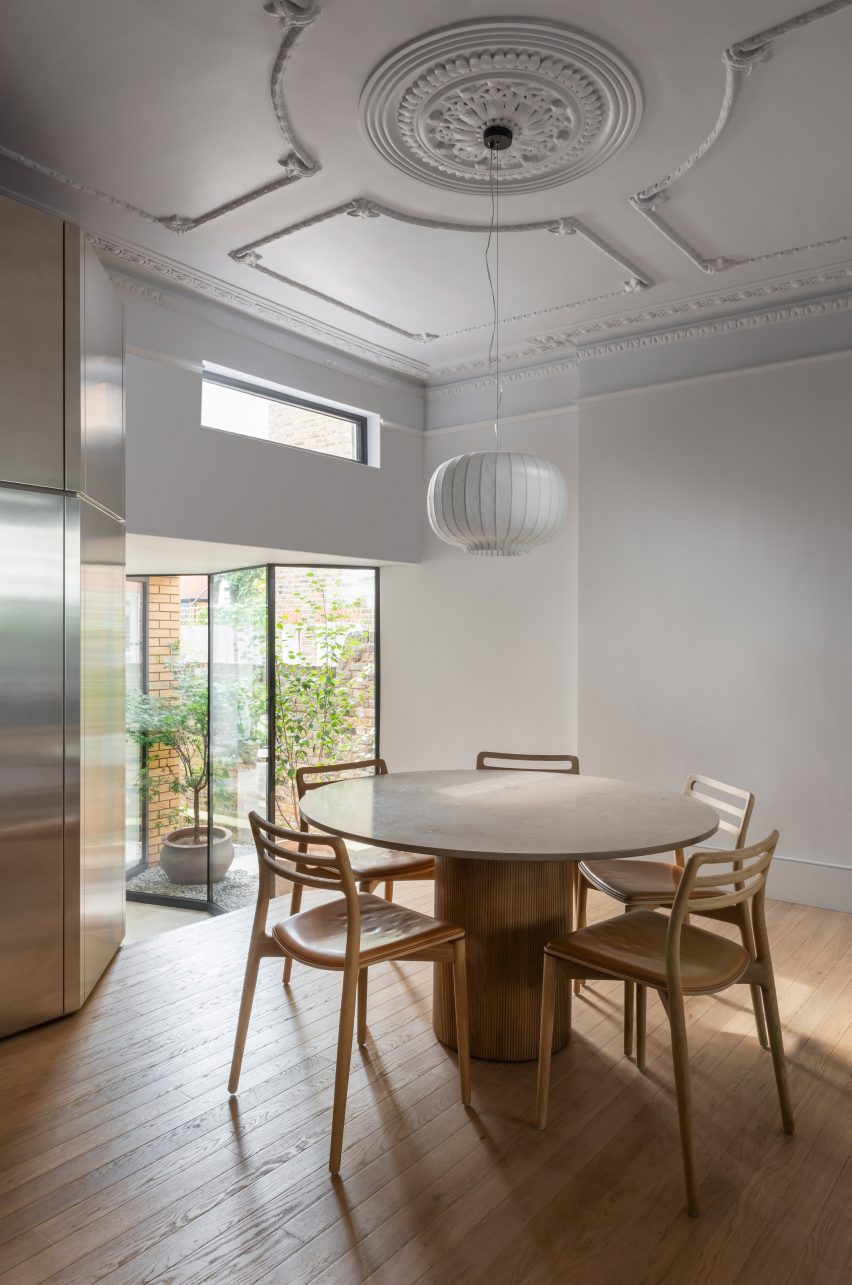 Original features were restored and highlighted
Original features were restored and highlighted
The kitchen has been relocated to the front of the house, occupying a previously underused front room.
Triple-glazed windows fronted by tall planting in the front garden provide sound insulation and privacy from the busy street adjacent.
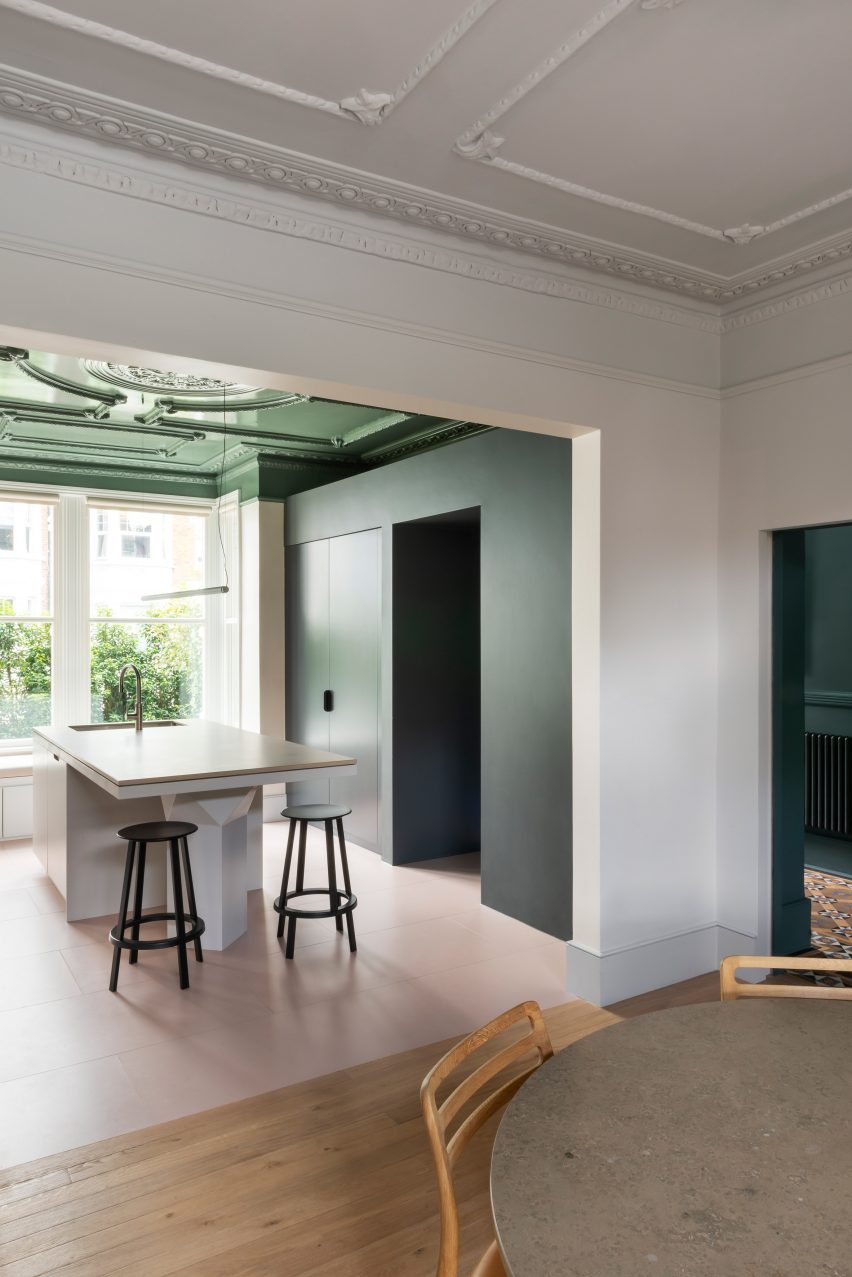 The kitchen has been relocated to the front of the house
The kitchen has been relocated to the front of the house
Bureau de Change decorated the kitchen with a “desaturated colour scheme”, combining a dark blue feature wall with dusty pink floor tiles and a high-gloss green finish on the decorative ceiling.
The reconfigured interior layout is designed to improve visual connections both horizontally and vertically throughout the house.
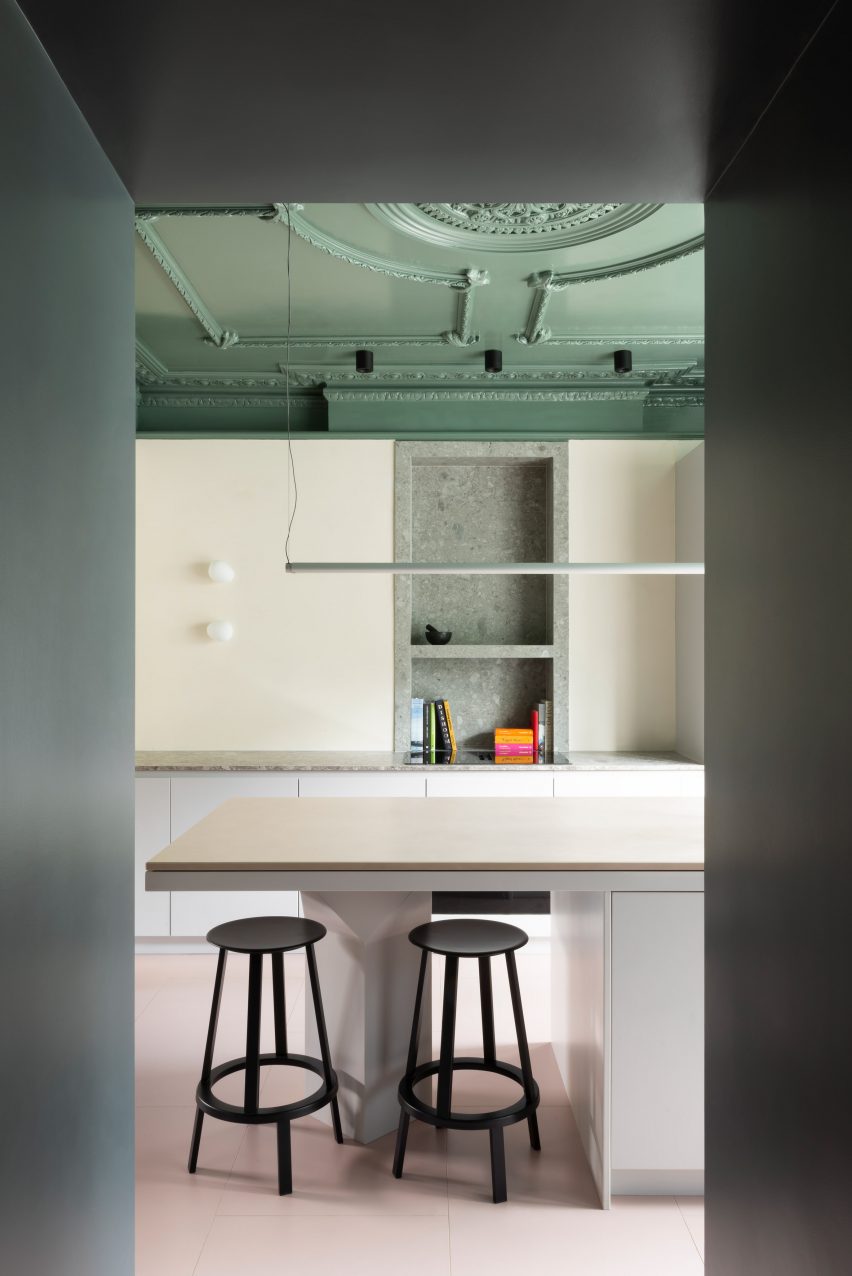 High-gloss green paint covers the decorative kitchen ceiling
High-gloss green paint covers the decorative kitchen ceiling
“The site provides a unique constraint of dropping almost a metre in level,” said Bureau de Change.
“This drove the creation of three distinct yet connected rooms cascading from front to back.”
The DHaus Company revamps London house with butterfly-roof extension
“Internal material choices were made due to durability, use of space and differentiation between rooms to enhance the journey from one space to another,” added the studio.
“The colours in the house become lighter as you get closer to the garden, creating a gradient from the dark entrance space to the living spaces.”
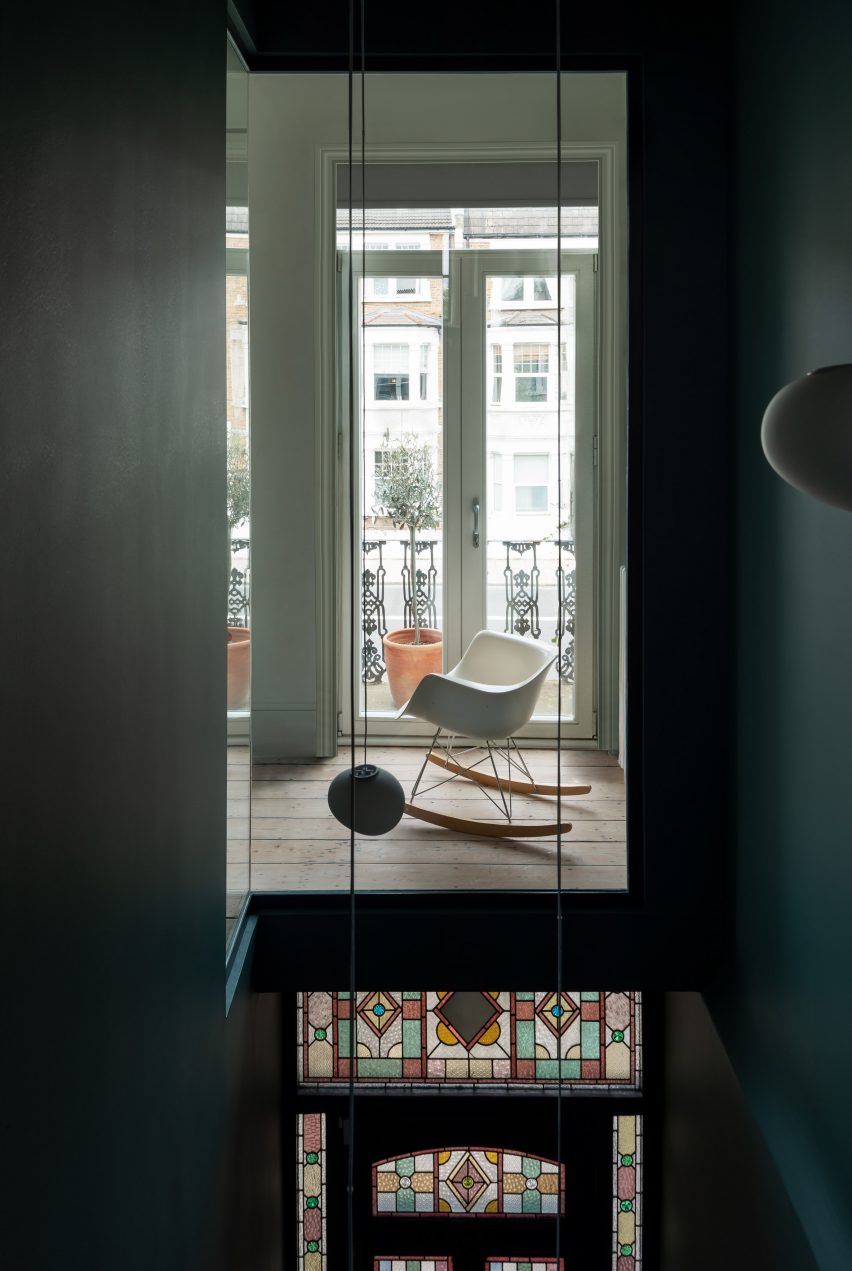 A double-height void connects the entrance and first-floor spaces
A double-height void connects the entrance and first-floor spaces
A double-height void has been introduced above the entrance space, where deep blue tones contrast against the original Victorian tiling and stained glass windows.
Full-height internal glazing on the corner of the first-floor playroom above allows natural light to flow into the entrance space.
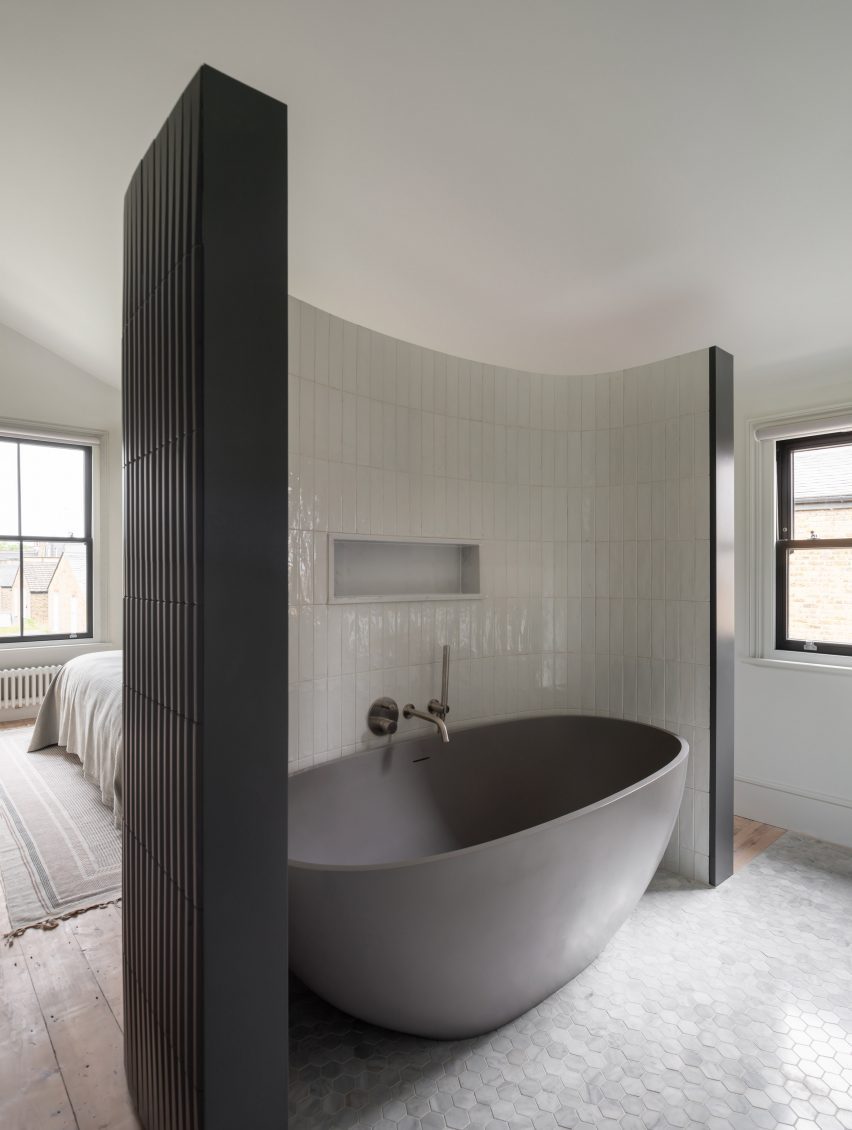 A curved partition wall encloses a bathtub
A curved partition wall encloses a bathtub
Overlooking the garden on the second floor, the main bedroom features a curved tile-clad partition that encloses a freestanding bathtub.
Bureau de Change was founded by architects Billy Mavropoulos and Katerina Dionysopoulou in 2012. Previous projects by the studio featured on Dezeen include a jewellery store with an asymmetric window in Athens and an art deco annexe added to a west London home.
The photography is by Gilbert McCarragher.

